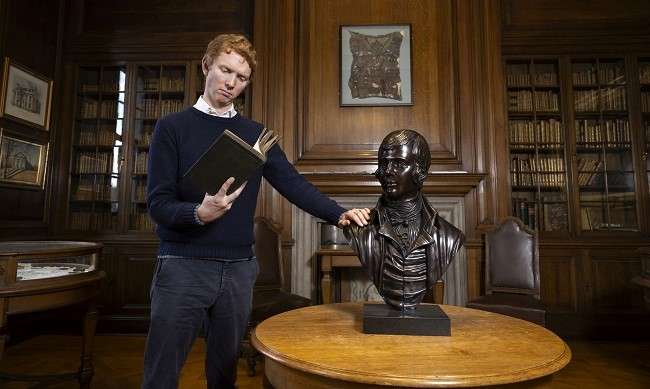The University of Glasgow’s Centre for Robert Burns Studies (CRBS) has appointed a PhD scholar for a groundbreaking research project examining Robert Burns’s connections with Freemasonry. The celebrated Scottish poet was not only a prolific writer but also a dedicated Freemason throughout his adult life, serving as Senior Warden of Lodge St Andrew, Dumfries, until his death in 1796, with earlier powerful masonic connections also in Edinburgh and Ayrshire. His Masonic affiliations even influenced his work, including one of his most famous poems, A Man’s a Man for a’ That, which was notably performed at the opening of the Scottish Parliament in 1999.
This pioneering PhD research, funded by The Grand Lodge of Antient Free and Accepted Masons of Scotland, marks the first in-depth academic study of its kind, with unprecedented access to the Grand Lodge’s archives. The doctorate will be supervised within the Centre for Robert Burns, the world-leading research unit at the University of Glasgow. Patrick Jamieson, the new Burns and Freemasonry scholar, said: “It is an honour to have been awarded the Scottish Masonic Scholarship by the University of Glasgow, and to have been given the chance to undertake such necessary research. I am grateful to the Grand Lodge of Scotland for providing unprecedented access to masonic records across the country, most of which date back to Enlightenment Scotland. Already, study of these records has provided information about a number of Burns’s patrons which begins to corroborate previous theories about the role a masonic network might have played in facilitating his ascension to the status of ‘Caledonia’s Bard’. I look forward to delving deeper into the archives over the coming years and discovering new insights into this fascinating and understudied part of Burns’s life and career.”
Caledonia’s bard
Professor Gerard Carruthers, Chair of Scottish Literature, said: “Robert Burns’s career was often boosted by his Masonic networks. There is nothing sinister about this: Burns to begin with did not have a lot of power. Indeed, he did not even have a vote and Masonry provided the poet with access to an intelligent, highly cultured grouping that was objectively interested in him. This new scholarship will give us time for a deep and controlled dive into what Freemasonry brought to Burns.”
Evidence of Burns’s Masonic life is preserved at the Grand Lodge of Scotland in Edinburgh, where his original Masonic apron is displayed in the museum. The Grand Lodge of Ancient Free and Accepted Masons of Scotland, founded in 1736 and headquartered in Edinburgh, with a global presence, has provided full funding for this three-year scholarship, demonstrating their commitment to advancing understanding of Scotland’s cultural heritage. The research will be conducted within the prestigious Centre for Robert Burns Studies, recipient of the Queen’s Anniversary Prize in 2023, the highest national Honour awarded in UK further and higher education. The project aims to explore how Freemasonry’s principles of liberty, fraternity, and equality influenced Burns’s writing and his contribution to Scottish cultural nationalism.
Burns’s Masonic journey began on July 4, 1781, when he was initiated as an Entered Apprentice in Lodge St David, Tarbolton at the age of 23. His rapid rise within the organisation saw him elected as Depute Master of Lodge St James at just 25, demonstrating the high regard in which he was held by his fellow Masons. The celebrated poet’s Masonic life flourished alongside his literary career. It also provided Burns with crucial support and patronage. When his first Kilmarnock edition was published in 1786, 350 members of St John’s Lodge, Kilmarnock subscribed to copies, providing crucial early support for his work. His prominence in Masonic circles grew when the then Grand Master of Scotland, Francis Chateris, famously toasted him as ‘Caledonia’s bard’ at an Edinburgh gathering in 1787.
Main photo: Patrick Jamieson at the museum in The Grand Lodge of Antient Free and Accepted Masons of Scotland in Edinburgh. Photo: Martin Shields.

